Residential architecture is a fine art. More specifically, it’s the fine art of designing non-commercial spaces — in other words, homes. People’s homes — whether they’re penthouse apartments or single-story family homes — define their day-to-day lives. And you, as the designer of that home, get to set the tone.
That means residential architects have the responsibility to design living spaces that actually work for people. This guide is meant to help with that.
Read on to learn about residential design, including:
- What is Residential Architecture?
- Key Considerations
- Key Steps in the Process
- How to Gain A Competitive Advantage
What is Residential Architecture?
Residential architecture is about designing living spaces. Those spaces can be inviting, sleek, modern, rustic, chic, or any number of other descriptors. The true artistry of housing architecture is knowing how to design floor plans that are functional and communicate the vibes and feelings you intend for them.
Architectural housing design isn’t just for standalone homes. This field can encompass the design of many types of residential structures. Here are some examples of the different types of residential architecture:
- Single-story homes
- Multi-family homes
- Mansions
- Apartment buildings
- Condos
- Residential spaces converted from other types of buildings
- Any other space designed for people to live in
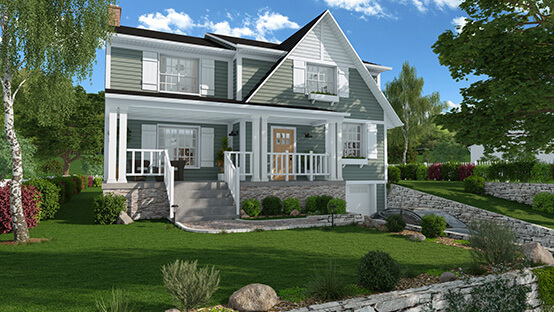
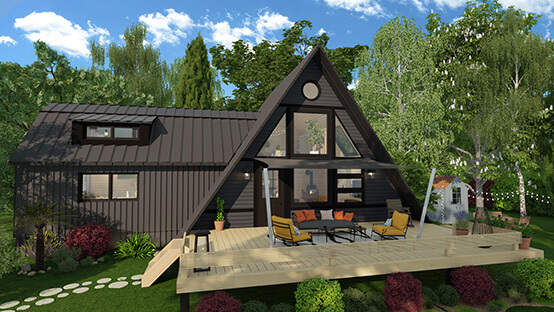
Key Considerations for Residential Architects
Knowing the various types of residential architecture is only step one. To be successful as a residential architect, you need to manage a wide range of considerations, from the needs of your clients to the actual look and feel of the spaces you plan to build.
If you are interested in residential architecture as a field of study or a way to expand your career, you need to keep the following considerations in mind:
Clients’ needs
You may be an artist at heart, but residential architects have to remember that business is a big part of architectural housing design. In other words, the client’s needs come first. No matter how creative you are or how many ideas you have, you need to work with your clients. They very likely will appreciate your ideas, and they may even ask you to design to your heart’s content, but at the end of the day, they are paying the bill, and they’ll be unhappy if you don’t listen to their needs.
Building codes
An unhappy client may leave you a bad review, but an unhappy local government may fine you heavily or put a stop to your home-building project altogether. That’s why another critical consideration for housing architecture professionals is building codes. Be as creative as you want and take your clients’ ideas to new heights — but only within the confines of what’s allowed by local building codes.
Safety issues
If you follow local building codes, many possible safety problems involved with residential architecture will be taken care of. However, you need to take safety a step further. Consider the form and function of any home you design. Picture real people using it and ask yourself if it might ever become unsafe. If the answer is yes, find ways to design it differently.
Functionality
A home that is beautiful from the outside may be worthless on the inside. Why? Because functionality is one of the most important considerations for residential design. Remember — people spend more time in their homes than they spend anywhere else. If it’s a pain to get from point A to point B within the home, those who live there won’t be happy. To prevent these problems, you need to focus on the floor plan as much as, if not more than, you focus on the exterior of the home.
Aesthetic appeal
With that being said, the way the home actually looks does still matter. An industrial warehouse may be highly functional on the inside but ugly on the outside, and no one is going to want to live there. So, as you break into residential architecture, make sure you’re working with tools that can not only help you build functional floor plans but design and visualize beautiful homes.
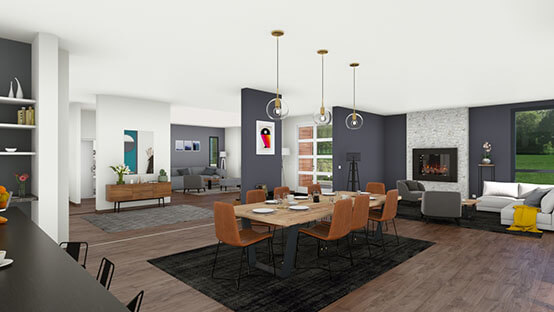
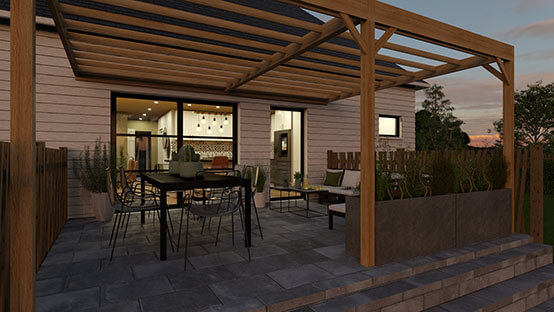
Key Steps in the Residential Architecture Process
So, you’re ready to join the ranks of residential architects. You understand the different types of residential architecture, and you know the key considerations you need to keep in mind as you design your first home. But how, exactly, does that design process go? Like this:
Schematic design
In this early stage of the process, you begin by gathering information about the home design project itself. What does the client want the home to look like in general? What are the must-haves and the definitely-do-not-haves?
With that information in hand, you’re ready to create a rough layout of the design. This will include depicting the planned site of the structure and the rough outlines of exterior walls, interior spaces, and other elements of the floor plan. The idea here is to plan the space in terms of general size, placement, and function.
Design development
If you and your client land on roughly the same page during the schematic design phase, you’re ready to move into design development. This is part of the residential architecture process in which you solidify the floor plan itself. You will also add details like surface coverings, decorations, and furnishings.
Near the end of this phase, you should have a residential home design that is detailed enough to generate a 3D rendering that makes sense and looks like a home. The 3D rendering is key — remember that your clients may not be as talented as you are at visualizing spaces. They will likely need the visual aid that a detailed 3D rendering will provide.

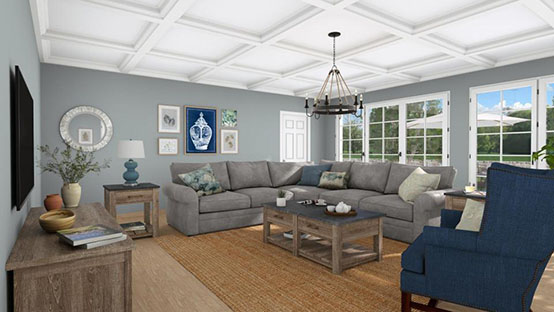
Feedback and refinement
With a 3D floor plan ready to go, you’re now ready for the intensive feedback phase of the architectural housing design process. For this, you will need to be able to easily share designs in formats that work well for both you and your clients. You will also need a tool that enables you to make edits quickly — ideally in real-time, as you sit with your client to discuss the project.
Construction documentation
After several rounds of back and forth, you and your client should reach an agreement on the complete home design. The client needs to approve every detail, and you need to ensure that the design is sound and something you would be proud to have your name on.
Then, it’s time to get to work on the construction documentation. This will amount to nearly a dictionary’s worth of papers that show the home from every possible angle. These construction documents will contain every last detail a construction team will need to build the house to your exact specifications.
Without the proper tools — and knowledge of how to use them — this step can extend a project timeline by weeks or months, so it’s important to have the right tools ready to go before you begin your project.
How Software Gives Residential Architects a Competitive Advantage
Residential architects don’t have an easy job. If you’re a designer at heart, the job is a fun one, but it isn’t inherently easy. But software like Cedreo is making it a lot easier and, in the process, more fun. Here’s how:
Accelerate floor planning:
- 2D – With functions like continuous drawing, in which you click to create corners in walls, drag-and-drop furnishings, quick floor plan scale adjustments, and much more, Cedreo lets you do in minutes what used to take hours in residential architecture.
- 3D – Before software like Cedreo existed, 3D renderings were an additional step to include in any residential housing design project timeline. That’s because you had to send your 2D floor plan to professional 3D designers who could create a hard copy of a 3D rendering. But those days are over. As you draw in 2D, Cedreo instantaneously generates the 3D version in a separate window.
Generate photorealistic designs:
When you are ready to share your design, all it takes is a couple of clicks to start the photorealistic rendering process. Within minutes, you will have a stunning, high-definition representation of your residential design. You can generate multiple photorealistic renderings to showcase different angles and lighting to ensure that your client gets the full picture.

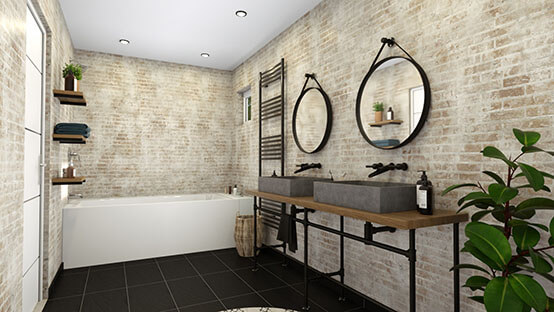
Improve client collaboration:
The ability to quickly and cost-effectively generate detailed visualizations of your residential architecture design work improves client collaboration and, in turn, client satisfaction. Why? Because clients need the visual aid of a 3D rendering. They need to be able to picture themselves in the home as it would exist in real life to offer feedback that truly reflects their wants and needs for the project.
Fast-track client approvals:
When you get client feedback on a residential project, you don’t have to go back to the drawing board and start from scratch. With Cedreo, you simply open up the project in question and make quick adjustments. It’s a case of hours vs. minutes — and you know which one is better for your business.
Reduce conceptual design costs:
Getting a professional 3D rendering made can cost thousands of dollars. Getting several of them made can cost several thousand dollars — not to mention weeks of lost productivity. Cedreo eliminates that step by generating beautiful 3D renderings instantaneously. In the process, it significantly reduces project costs.
On top of that, because Cedreo allows you to design so much more quickly than traditional housing architecture design methods, you save on labor costs. All of these benefits work together to give you higher profit margins on every project, as well as more time to close additional project deals.
“I was really shocked to find how easy it is to use their website software. No other 3D home design even compares to Cedreo. So happy we found it!” – Daniel J.
Reduce Design Costs and Close More Deal With Cedreo
You can do residential architecture the hard way, or you can do it the easy way with Cedreo. Get all the functionality of expensive CAD software without the learning curve or budget-busting costs. Try Cedreo’s 3D architecture software today, and watch your career as a residential architect blossom.


